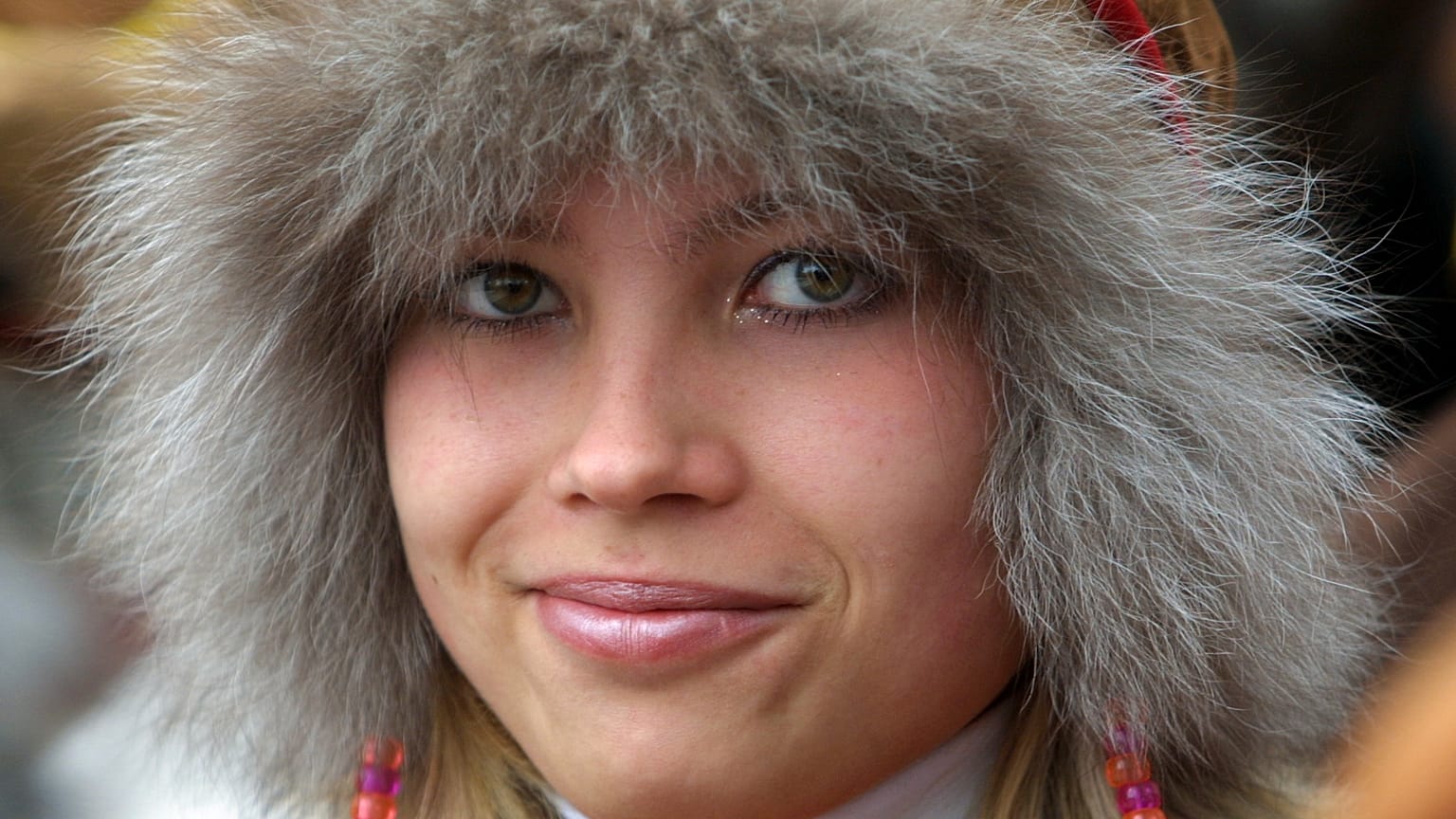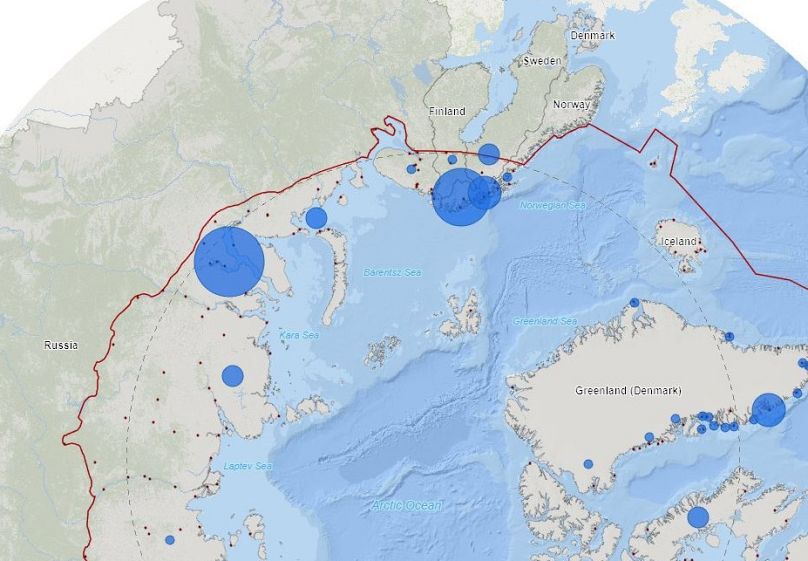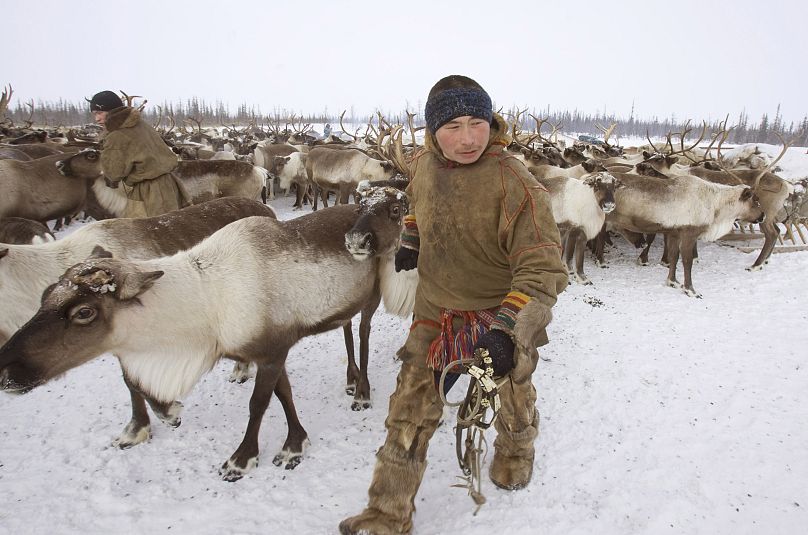On the occasion of the International Day of the World's Indigenous Peoples (August 9), Euronews looks at the situation of Europe's indigenous communities, from Scandinavia's Samis to Greenland’s Inuits.
From Scandinavia's Saamis to Greenland’s Inuits, Europe's indigenous peoples represent vibrant communities with multi-millennial histories. Yet they are still struggling for recognition.
On the frontlines of climate change, they are faced with the degradation of their environments and livelihoods, the disappearance of their ancestral languages, and the exploitation of their traditional lands, often rich in resources.
Who are Europe's indigenous peoples? What are the challenges faced by their communities and is Europe doing enough to uphold their rights?
On the occasion of the International Day of the World's Indigenous Peoples (August 9), Euronews looks into these questions.
What defines indigenous peoples?
While there is no universally agreed definition of what it means to be indigenous, the United Nations has developed the following understanding of the term:
• "Self-identification as indigenous peoples at the individual level and accepted by the community as their member;
• historical continuity with pre-colonial and/or pre-settler societies;
• strong link to territories and surrounding natural resources;
• distinct social, economic or political systems;
• distinct language, culture and beliefs;
• form non-dominant groups of society;
• resolve to maintain and reproduce their ancestral environments and systems as distinctive peoples and communities."
Who are Europe's indigenous peoples?
The vast majority of Europe's indigenous people can be found in the Arctic region.
The Saami
The Saami people live in Sweden, Norway, Finland and Russia. While there is no reliable figure, they represent an estimated 50,000-100,000 people, according to the International Working Group on Indigenous Affairs.
"We are a nomadic people that follow the reindeers' herding rhythm most of the year, " Elle Merete Omma, Head of the EU unit of the Saami Council, told Euronews.
"Nature and land are very important to us — they are the cornerstones of our worldview," she continued.
Greenland's Inuits
In Greenland, a self-governing territory within the Danish Realm, out of a total 57,691 of inhabitants 89.6% are Greenlandic Inuits, according to 2018 estimates cited by the International Working Group on Indigenous Affairs (IWGIA).
Hunting has always been central to Inuit cultures, and until a few decades ago Greenland's indigenous people lived completely off the land and sea. Today the economy has shifted and also includes commercial fisheries, tourism and emerging oil and mining industries.
Russia's indigenous peoples
At the crossroads of Europe and Asia, Russia is home to 160 distinct peoples, including 40 that are officially recognized as indigenous.
"These are groups of less than 50,000 members, who are able to preserve some aspects of their traditional ways of life and continue to inhabit their territories," IWGIA said in its latest report.
Among them are the Nenets of the Siberian Arctic (below see picture), who are reindeer herders, or the nomadic Enets, which number just a few hundred individuals.
According to the NGO Cultural Survival, although Russia’s indigenous peoples only make up 0.2% of the total population (about 260,000 individuals), they inhabit about two-thirds of the country's territory.
What are the key challenges facing Europe's indigenous peoples?
Climate change
Indigenous peoples in Europe, whose cultures and livelihoods depend so much on their natural environment, are on the frontlines of climate change.
Scientists estimate that the Arctic is warming up at a rate twice the global average.
READ: Greenland ice sheet 'rapidly melting' — here's how it will affect us all
As sea ice melts, the hunting, fishing and herding activities that provide the basis of indigenous communities' livelihoods are at risk.
Indigenous peoples across the world are disproportionally impacted by climate change even though they contribute least to greenhouse emissions, according to the UN.
Endangered languages
The survival of their ancestral languages is also among the key concerns of indigenous peoples across the world and Europe is no exception.
The United Nations has declared 2019 as the International Year of Indigenous Languages, noting that 40% of the estimated 6,700 languages spoken around the world were in danger of disappearing and that a majority were indigenous.
"Languages play a crucial role in the daily life of indigenous peoples," said Omma. "Not only as a tool for communication, education, social integration but also as a source for each person's unique identity, cultural history, traditions."
"But despite that, indigenous languages continue to disappear at an alarming rate and that's also true for the Saami languages," she added.
"I think in that regard, the EU has something they can contribute to. The EU is a multilingual institution and they have a lot of knowledge on how to use resources and capacity to strengthen languages. We want to see what we can learn from the EU."
Land and resources
Resource and extraction industries on their traditional lands are another vital challenge for indigenous peoples.
"What we see is that economic development often conflicts with already established traditional Saami business sectors. Mining, oil and gas all have a short living span, but traditional Saami food industries for instance, such as reindeer herding or fishing, focus on sustainable use of resources," Omma said.
"From an EU perspective, I find it contradictory that there is more awareness about how EU investment should be carried out on indigenous land outside the EU, but less focus on how investments inside the EU affect Saami cultures and way of life," she added.
Is Europe doing enough to uphold indigenous peoples' rights?
"The EU has a really sophisticated set of rules, code of conducts when it comes to indigenous peoples outside of Europe but not so much when it comes to its own indigenous peoples," Omma said.
External action
As the largest provider of development aid in the world, the EU has developed far-reaching policies when it comes to engagement with indigenous peoples in international cooperation.
On the occasion of the World's International Day of Indigenous Peoples 2019, EU High Representative for Foreign Policy Federica Mogherini issued a statement reiterating the bloc's commitment to "promote and fight for indigenous languages and cultures."
It provided examples of the EU's external action in this area, like "in Namibia, where the European Instrument for Democracy and Human Rights contributes to the revitalisation of endangered indigenous languages, or in the Chittagong Hills Tracts of Bangladesh where we helped develop a multilingual mother tongue education programme in seven different tribal languages."
The statement didn't make specific mention of indigenous languages and cultures in Europe.
Indigenous peoples' rights inside the EU
Euronews contacted the European Commission to ask what the EU was doing to support indigenous peoples’ rights inside the bloc.
"This is an issue that we definitely follow within the EU," a Commission spokesperson said.
"In particular, the EU contributes to respecting the rights of indigenous people from the angle of non-discrimination (Article 21 of the Charter of Fundamental Rights of the EU) and the overall EU policy on non-discrimination."
"I think we need to improve EU regulatory frameworks so it has the same obligations and codes of conduct towards indigenous peoples inside the EU and outside the EU," Omma said.
She provided various examples, including the current project to build an Arctic railway, which is likely to kill reindeers if no mitigating measures are implemented.
The Saami activist also noted that infrastructure projects financed by the European Investment Bank included no specific requirements on their impact for indigenous peoples' rights, besides general mentions of human rights, which wouldn't be possible for development projects funded through external action.
But the head of the EU unit of the Saami Council also said the EU had "great potential" when it came to developing indigenous peoples' rights, considering its experience reflecting on and accepting different cultures and opinions.
Dialogue between the Saamis and the EU, which has been ongoing since 2012, has intensified since 2016, Omma said.

















